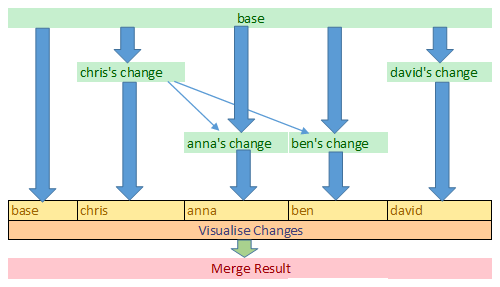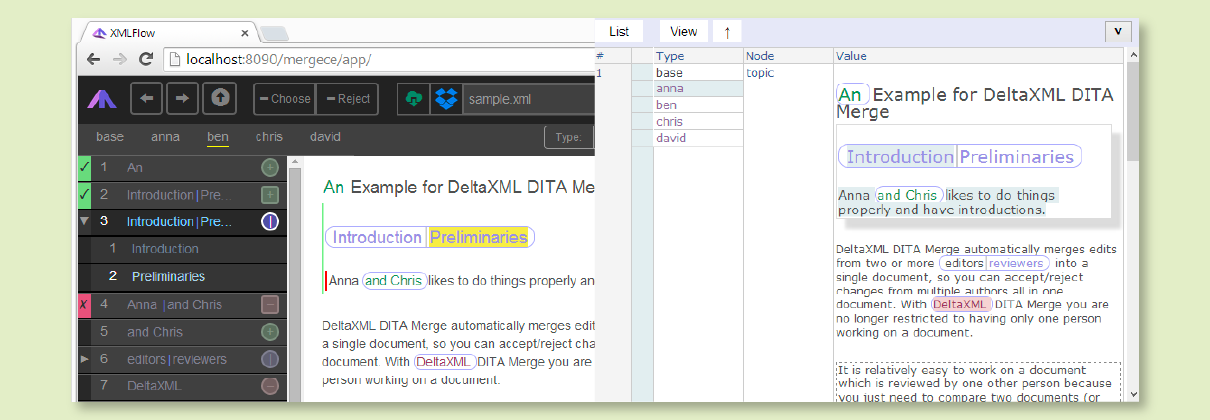In this, my first post on our DeltaXignia blog, I will be pondering the issue of how to effectively visualise multiple revisions made to a single document. I realize, of course, that there are many good examples of 3-way comparison rendering (2 revisions with a common ancestor), but how about 5-way or 10-way?
Before we begin
To help provide some visual context for this, I modified a pre-existing Saxon-CE XSLT 2.0 app to develop what is a simple ad-hoc web-based prototype. I used XSLT 2.0 rather than JavaScript to drive the prototype because I already had an open source XSLT 2.0 project to provide a base, and it also allowed me to reuse some code from DeltaXignia’s samples.
A scenario
The scenario I’m using is based on a DITA document with 4 revisions, each modified by a different author, and a common ancestor:

In the above diagram, we start with the base DITA document which is the ‘common ancestor’ for all changes. Four stakeholders anna, ben, chris and david were asked to review the base document and make their amendments in place and return the amended version. We now need to review all these change documents with a view to combining them in a coherent way into a single document again.
From the diagram we can see that some changes made by anna and ben are similar and also overlap with those from chris. This may be coincidence but it is more likely that they got the changes from the same source as chris. Regardless of the cause, we need to cater for this kind of ‘compound’ change also.
Collating revisions with DITA Merge
To collate all the revision documents, I used our new
DITA Merge
solution from DeltaXignia and added the documents returned by anna, ben, chris and david, plus the base document. Using DITA Merge’s Java API I created a simple Java-FX app which allowed me to
merge
documents by drag and drop from a file-view but I could equally have initiated the process from the command-line without any code.
Reviewing results
Annotated XML
The result from DITA Merge is a single DITA document annotated with ‘version identifiers’ highlighting the ‘owner’ of each modified document part. We can now use XSLT to produce a rendered WYSYWIG output, but first, here’s a look at the XML output from the merge.



